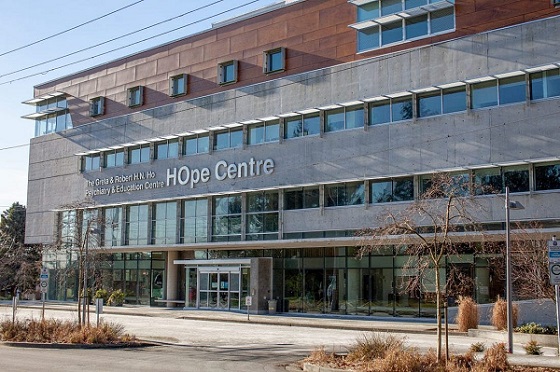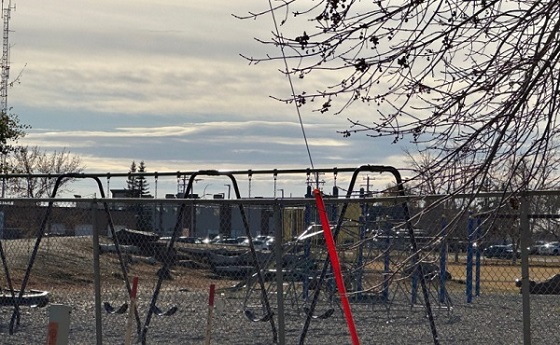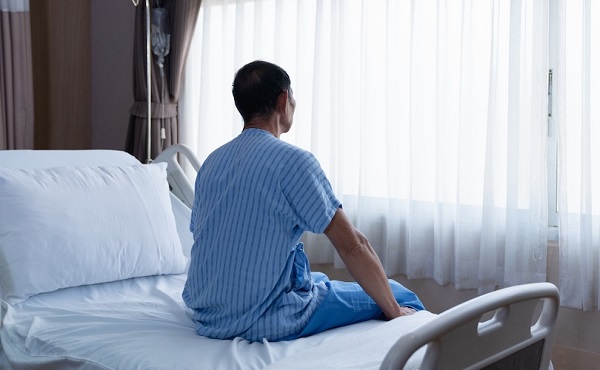Addictions
Provinces are underspending on addiction and mental health care, new report says

The Greta and Robert H. N. Ho Psychiatry and Education Centre, the HOpe Centre, a health care facility for mental illness and addiction in North Vancouver, B.C. (Dreamstime)
By Alexandra Keeler
The provinces are receiving billions in federal funds to address mental health and substance use. Why are so many spending so little?
The provinces are failing to allocate sufficient funding to addiction and mental health care services, a new report says.
The report, released Dec. 19 by the Canadian Alliance on Mental Illness and Mental Health, criticizes the provinces for a “long history of … demanding maximum cash for health care from the federal government with minimum accountability.”
The alliance is a coalition of 18 prominent health organizations dedicated to improving Canada’s mental health care. Its members include the Canadian Medical Association, the Canadian Psychiatric Association and the Canadian Mental Health Association.
On average, the provinces have allocated just 16 per cent of $25 billion in federal health-care funding toward mental health and addiction services, the report says.
“Given the crisis of timely access to care for those with mental health and substance use health problems, why are so many provinces and territories investing so little new federal dollars to improve and expand access to mental health and substance use health care services?” the report asks.
However, some provinces dispute the report’s criticisms.
“The funding received from the federal government is only a small part of Alberta’s total $1.7 billion allocation towards mental health, addiction and recovery-related services,” an Alberta Ministry of Mental Health and Addiction spokesperson told Canadian Affairs in an emailed statement.
“[This] is a nation leading level of investment response.”
‘Take the money and run?’
In 2023, Ottawa and the provinces committed to spend $25 billion over 10 years investing in four priority areas. These areas are mental health and substance use, family health services, health workers and backlogs, and a modernized health system.
The alliance’s report, which looks at provincial investments in years 2023 through 2026, says mental health and substance use are being given short shrift.
B.C., Manitoba and P.E.I. have allocated zero per cent of the federal funds to mental health and substance use, the report says. Three other provinces allocated 10 per cent or less.
By contrast, Alberta allocated 25 per cent, Ontario, 24 per cent, and Nova Scotia, 19 per cent, the report says.
The underspending by some provinces occurs against a backdrop of mental health care already receiving inadequate investment.
“[P]ublicly available data tells us that Canada’s mental health investments account for roughly 5% of their health budgets, which is significantly below the recommended 12% by the Royal Society of Canada,” the report says.
However, several provinces told Canadian Affairs they took issue with the report’s findings.
“Neither the Department of Health and Wellness nor Health PEI received requests to provide information to inform the [alliance’s] report,” Morgan Martin, a spokesperson for P.E.I.’s Department of Health and Wellness, told Canadian Affairs.
Martin pointed to P.E.I.’s investments in opioid replacement therapy, a mobile mental health crisis unit and school health services as some examples of the province’s commitment to providing mental health and addiction care.
But Matthew MacFarlane, Green Party MLA for P.E.I.’s Borden-Kinkora riding, says these investments have been inadequate.
“P.E.I. has seen little to no investments into acute mental health or substance use services,” he said. He criticized a lack of new detox beds, unmet promises of a new mental health hospital and long wait times.
The alliance’s report says New Brunswick has allocated just 3.2 per cent of federal funds to mental health and addiction services.
However, a New Brunswick Department of Health spokesperson Tara Chislett said the province’s allocation of $15.4 million annually from the federal funds does not reflect the additional $200 million of provincial funding that New Brunswick has committed to mental health and substance use.
In response to requests for comment, a spokesperson for the alliance said the federal funding is important, but “does not nearly move the yardsticks fast enough in terms of expanding the capacity of provincial health systems to meet the growing demand for mental health and substance use health care services.”
Our content is always free.
Subscribe to get BTN’s latest news and analysis, or donate to our journalism fund.
‘Blaming and shaming’
The discrepancies between the report’s findings and the provinces’ claims highlight a need for standardized metrics around mental health and addiction spending.
The report calls on federal and provincial governments to develop national performance indicators for mental health and substance use services.
“At the end-of-the day you cannot manage what you do not measure,” the report reads.
It advises governments to communicate their performance to Canadians via a national dashboard.
“Dashboards are being used with increasing frequency in the health system and other sectors to summarize complex information and would be one way to effectively tell a story … to the public,” the report says.
It also urges Ottawa to introduce legislation — what it dubs the Mental Health and Substance Use Health Care For All Parity Act — to ensure equal treatment for mental and physical health within Canada’s health-care system.
This call for mental and physical health parity echoes the perspective of other health-care professionals. In a recent Canadian Affairs opinion editorial, a panel of mental health physicians argued Canada’s failure to prioritize mental health care affects millions of Canadians, leading to lower medication reimbursement rates and longer wait times.
The alliance says its call for more aggressive and transparent spending on mental health and addictions care is not intended to criticize or cast blame.
“This is not about blaming and shaming, but rather, this is about accelerating the sharing of lessons learned and the impact of innovative programs,” the report says.
This article was produced through the Breaking Needles Fellowship Program, which provided a grant to Canadian Affairs, a digital media outlet, to fund journalism exploring addiction and crime in Canada. Articles produced through the Fellowship are co-published by Break The Needle and Canadian Affairs.
Our content is always free.
Subscribe to get BTN’s latest news and analysis, or donate to our journalism fund.
Addictions
Activists Claim Dealers Can Fix Canada’s Drug Problem

By Adam Zivo
We should learn from misguided experiments with activist-driven drug ideologies.
Some Canadian public-health researchers have argued that the nation’s drug dealers, far from being a public scourge, are central to the cause of “harm reduction,” and that drug criminalization makes it harder for them to provide this much-needed “mutual aid.” Incredibly, these ideas have gained traction among Canada’s policymakers, and some have even been put into practice.
Gillian Kolla, an influential harm-reduction activist and researcher, spearheaded the push to whitewash drug trafficking in Canada. Over the past decade, she has advocated for many of the country’s failed laissez-faire drug policies. In her 2020 doctoral dissertation, she described her hands-on research into Toronto’s “harm reduction satellite sites”—government-funded programs that paid drug users to provide services out of their homes.
The sites Kolla studied were operated by the nonprofit South Riverdale Community Health Centre (SRCHC) in Toronto. Addicts participating in the programs received $250 per month in exchange for distributing naloxone and clean paraphernalia (needles and crack pipes, for example), as well as for reversing overdoses and educating acquaintances on safer consumption practices. At the time of Kolla’s research (2016–2017), the SRCHC was operating nine satellite sites, which reportedly distributed about 1,500 needles and syringes per month.
Canada permits supervised consumption sites—facilities where people can use drugs under staff oversight—to operate so long as they receive an official exemption via the federal Controlled Drugs and Substances Act. As the sites Kolla observed did not receive exemptions, they were certainly illegal. Kolla herself acknowledged this in her dissertation, writing that she, with the approval of the University of Toronto, never recorded real names or locations in her field notes, in case law enforcement subpoenaed her research data.
Even so, the program seems to have enjoyed the blessing of Toronto’s public health officials and police. The satellite sites received local funding from 2010 onward, after a decade of operating on a volunteer basis, apparently with special protection from law enforcement. In her dissertation, Kolla described how SRCHC staff trained police officers to leave their sites alone, and how satellite-site workers received special ID badges and plaques to ward off arrest.
Kolla made it clear that many of these workers were not just addicts but dealers, too, and that tolerance of drug trafficking was a “key feature” of the satellite sites. She even described, in detail, how she observed one of the site workers packaging and selling heroin alongside crackpipes and needles.
In her dissertation, Kolla advocated expanding this permissive approach. She claimed that traffickers practice harm reduction by procuring high-quality drugs for their customers and avoiding selling doses that are too strong.
“Negative framings of drug selling as predatory and inherently lacking in care make it difficult to perceive the wide variety of acts of mutual aid and care that surround drug buying and selling as practices of care,” she wrote.
In truth, dealers routinely sell customers tainted or overly potent drugs. Anyone who works in the addiction field can testify that this is a major reason that overdose deaths are so common.
Ultimately, Kolla argued that “real harm reduction” should involve drug traffickers, and that criminalization creates “tremendous barriers” to this goal.
The same year she published her dissertation, Kolla cowrote a paper in the Harm Reduction Journal with her Ph.D. supervisor at the Dalla Lana School of Public Health. The article affirmed the view that drug traffickers are essential to the harm-reduction movement. Around this time, the SRCHC collaborated with the Toronto-based Parkdale Queen West Community Health Centre— the only other organization running such sites—to produce guidelines on how to replicate and scale up the experiment.
Thankfully, despite its local adoption, this idea did not catch on at the national level. It was among the few areas in the early 2020s where Canada did not fully descend into addiction-enabling madness. Yet, like-minded researchers still echo Kolla’s work.
In 2024, for example, a group of American harm-reduction advocates published a paper in Drug and Alcohol Dependence Reports that concluded, based on just six interviews with drug traffickers in Indianapolis, that dealers are “uniquely positioned” to provide harm-reduction services, partly because they are motivated by “the moral imperative to provide mutual aid.” Among other things, the authors argued that drug criminalization is harmful because it removes dealers from their social networks and prevents them from enacting “community-based practices of ethics and care.”
It’s instructive to review what ultimately happened with the originators of this movement—Kolla and the SRCHC. Having failed to whitewash drug trafficking, Kolla moved on to advocating for “safer supply”—an experimental strategy that provides addicts with free recreational drugs to dissuade use of riskier street substances. The Canadian government funded and expanded safer supply, thanks in large part to Kolla’s academic work. It abandoned the experiment after news broke that addicts resell their safer supply on the black market to buy illicit fentanyl, flooding communities with diverted opioids and fueling addiction.
The SRCHC was similarly discredited after a young mother, Karolina Huebner-Makurat, was shot and killed near the organization’s supervised consumption site in 2023. Subsequent media reports revealed that the organization had effectively ignored community complaints about public safety, and that staff had welcomed, and even supported, drug traffickers. One of the SRCHC’s harm-reduction workers was eventually convicted of helping Huebner-Makurat’s shooter evade capture by hiding him from the police in an Airbnb apartment and lying to the police.
There is no need for policymakers to repeat these mistakes, or to embrace its dysfunctional, activist-driven drug ideologies. Let this be another case study of why harm-reduction policies should be treated with extreme skepticism.
Our content is always free
If you want to help us commission more high-quality journalism,
consider getting a voluntary paid subscription.
Addictions
Canadian gov’t not stopping drug injection sites from being set up near schools, daycares

From LifeSiteNews
Canada’s health department told MPs there is not a minimum distance requirement between safe consumption sites and schools, daycares or playgrounds.
So-called “safe” drug injection sites do not require a minimum distance from schools, daycares, or even playgrounds, Health Canada has stated, and that has puzzled some MPs.
Canadian Health Minister Marjorie Michel recently told MPs that it was not up to the federal government to make rules around where drug use sites could be located.
“Health Canada does not set a minimum distance requirement between safe consumption sites and nearby locations such as schools, daycares or playgrounds,” the health department wrote in a submission to the House of Commons health committee.
“Nor does the department collect or maintain a comprehensive list of addresses for these facilities in Canada.”
Records show that there are 31 such “safe” injection sites allowed under the Controlled Drugs And Substances Act in six Canadian provinces. There are 13 are in Ontario, five each in Alberta, Quebec, and British Columbia, and two in Saskatchewan and one in Nova Scotia.
The department noted, as per Blacklock’s Reporter, that it considers the location of each site before approving it, including “expressions of community support or opposition.”
Michel had earlier told the committee that it was not her job to decide where such sites are located, saying, “This does not fall directly under my responsibility.”
Conservative MP Dan Mazier had asked for limits on where such “safe” injection drug sites would be placed, asking Michel in a recent committee meeting, “Do you personally review the applications before they’re approved?”
Michel said that “(a)pplications are reviewed by the department.”
Mazier stated, “Are you aware your department is approving supervised consumption sites next to daycares, schools and playgrounds?”
Michel said, “Supervised consumption sites were created to prevent overdose deaths.”
Mazier continued to press Michel, asking her how many “supervised consumption sites approved by your department are next to daycares.”
“I couldn’t tell you exactly how many,” Michel replied.
Mazier was mum on whether or not her department would commit to not approving such sites near schools, playgrounds, or daycares.
An injection site in Montreal, which opened in 2024, is located close to a kindergarten playground.
Conservative Party leader Pierre Poilievre has called such sites “drug dens” and has blasted them as not being “safe” and “disasters.”
Records show that the Liberal government has spent approximately $820 million from 2017 to 2022 on its Canadian Drugs and Substances Strategy. However, even Canada’s own Department of Health admitted in a 2023 report that the Liberals’ drug program only had “minimal” results.
Recently, LifeSiteNews reported that the British Columbia government decided to stop a so-called “safe supply” free drug program in light of a report revealing many of the hard drugs distributed via pharmacies were resold on the black market.
British Columbia Premier David Eby recently admitted that allowing the decriminalization of hard drugs in British Columbia via a federal pilot program was a mistake.
Former Prime Minister Justin Trudeau’s loose drug initiatives were deemed such a disaster in British Columbia that Eby’s government asked Trudeau to re-criminalize narcotic use in public spaces, a request that was granted.
Official figures show that overdoses went up during the decriminalization trial, with 3,313 deaths over 15 months, compared with 2,843 in the same time frame before drugs were temporarily legalized.
-

 Daily Caller2 days ago
Daily Caller2 days ago‘Holy Sh*t!’: Podcaster Aghast As Charlie Kirk’s Security Leader Reads Texts He Allegedly Sent University Police
-

 Crime4 hours ago
Crime4 hours ago‘Modern-Day Escobar’: U.S. Says Former Canadian Olympian Ran Cocaine Pipeline with Cartel Protection and a Corrupt Toronto Lawyer
-

 Great Reset2 days ago
Great Reset2 days agoCanadian government forcing doctors to promote euthanasia to patients: report
-

 Alberta2 days ago
Alberta2 days agoSylvan Lake football coach fired for opposing transgender ideology elected to town council
-

 Carbon Tax1 day ago
Carbon Tax1 day agoCarney fails to undo Trudeau’s devastating energy policies
-

 Daily Caller16 hours ago
Daily Caller16 hours agoDemocrats Explicitly Tell Spy Agencies, Military To Disobey Trump
-

 Health1 day ago
Health1 day agoNEW STUDY: Infant Vaccine “Intensity” Strongly Predicts Autism Rates Worldwide
-

 Addictions1 day ago
Addictions1 day agoActivists Claim Dealers Can Fix Canada’s Drug Problem





